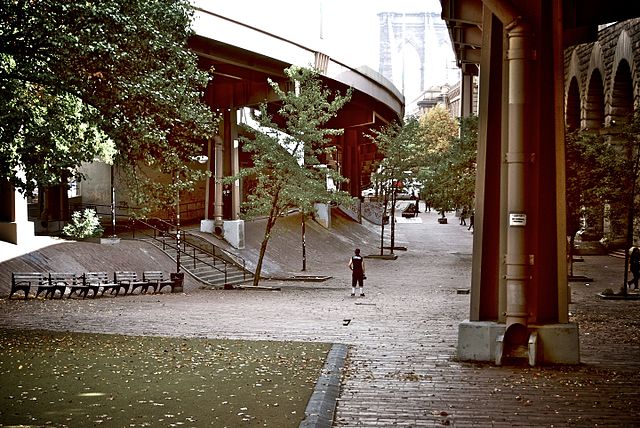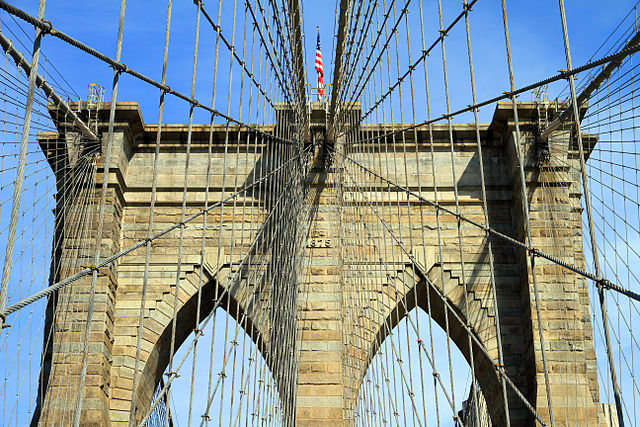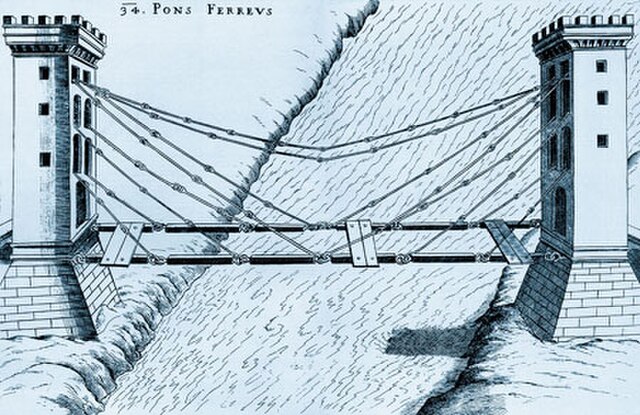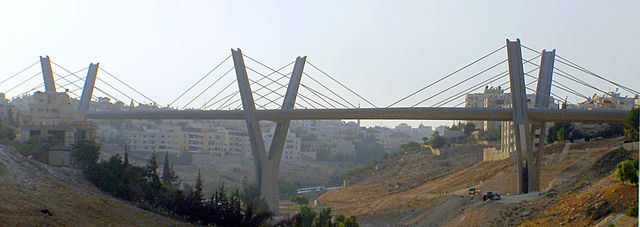The Brooklyn Bridge is a hybrid cable-stayed/suspension bridge in New York City, spanning the East River between the boroughs of Manhattan and Brooklyn. Opened on May 24, 1883, the Brooklyn Bridge was the first fixed crossing of the East River. It was also the longest suspension bridge in the world at the time of its opening, with a main span of 1,595.5 feet (486.3 m) and a deck 127 ft (38.7 m) above mean high water. The span was originally called the New York and Brooklyn Bridge or the East River Bridge but was officially renamed the Brooklyn Bridge in 1915.
View from Manhattan towards Brooklyn, 2009
An approach ramp to the Brooklyn Bridge, seen from Brooklyn, with Manhattan Bridge (partially hidden by buildings) seen in the background
Brooklyn Banks skate park, seen in 2009
View of diagonal stays and vertical suspender cables; the main cables are at top
A cable-stayed bridge has one or more towers, from which cables support the bridge deck. A distinctive feature are the cables or stays, which run directly from the tower to the deck, normally forming a fan-like pattern or a series of parallel lines. This is in contrast to the modern suspension bridge, where the cables supporting the deck are suspended vertically from the main cable, anchored at both ends of the bridge and running between the towers. The cable-stayed bridge is optimal for spans longer than cantilever bridges and shorter than suspension bridges. This is the range within which cantilever bridges would rapidly grow heavier, and suspension bridge cabling would be more costly.
The Russky Bridge in Vladivostok has a central span of 1104 metres. It is the world's longest cable-stayed bridge.
Øresund Bridge from Malmö to Copenhagen in Sweden and Denmark
Chain-stayed bridge by the Renaissance polymath Fausto Veranzio, from 1595/1616. Prior to industrial manufacture of heavy wire rope (steel cable), suspended or stayed bridges were firstly constructed with linked rods (chain).
Abdoun Bridge, Amman, Jordan, example of an extradosed bridge








